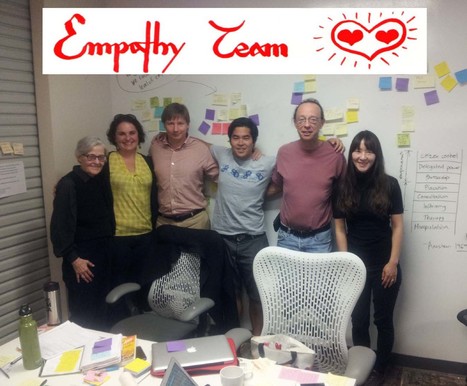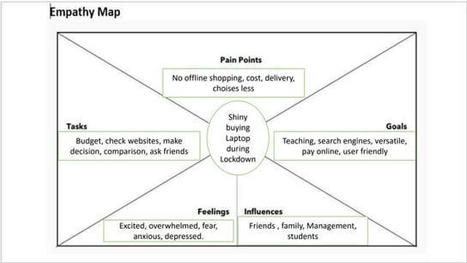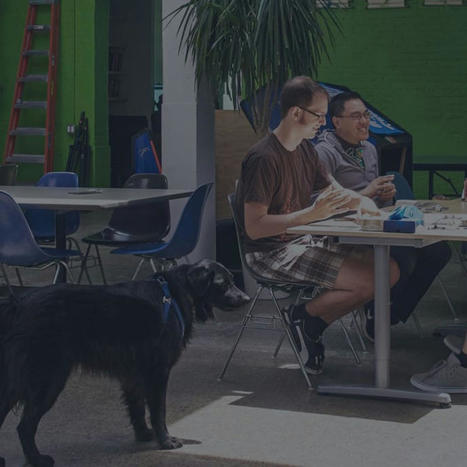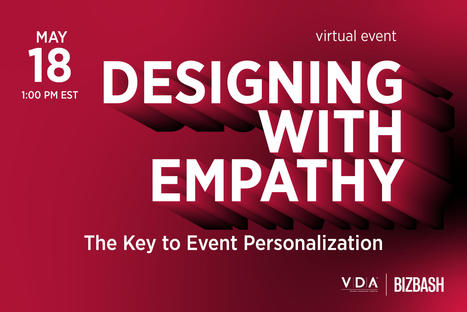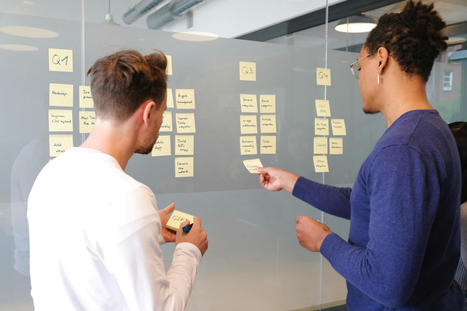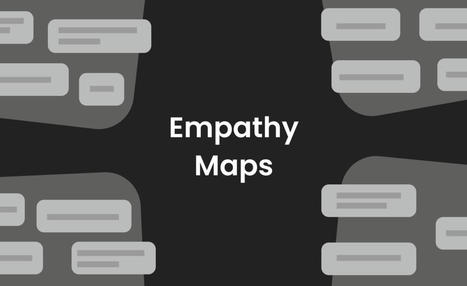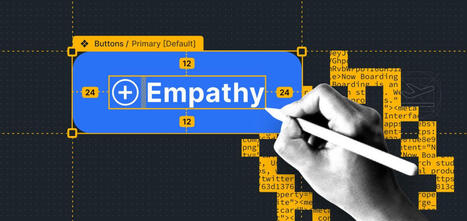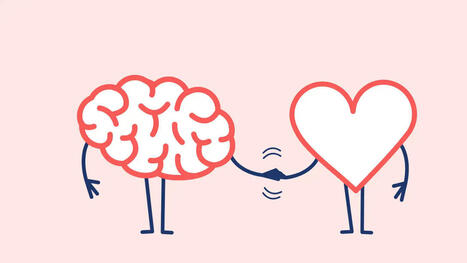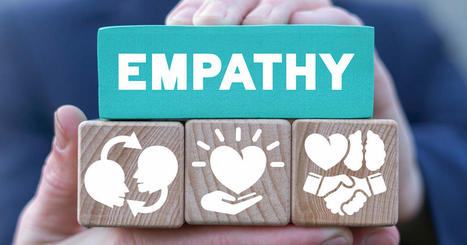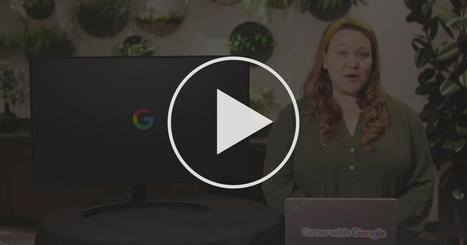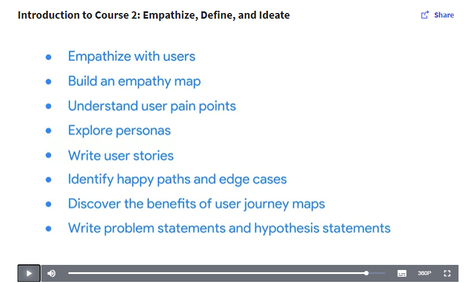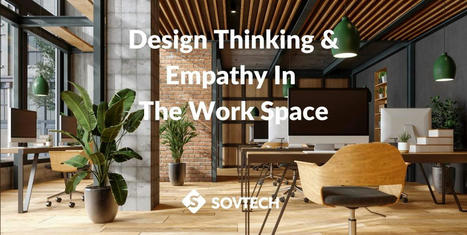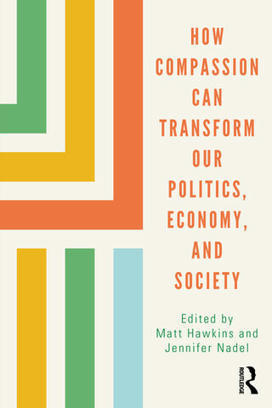 Your new post is loading...
 Your new post is loading...

|
Scooped by
Edwin Rutsch
April 14, 2011 7:09 PM
|
Photo of the Empathy Team doing the Acumen/IDEO Design Course.
More Empathic Design Links
Visit the individual magazines specifically for empathy and;
==================== Please Click 'Follow' to receive updates.
It also helps us rise in the rankings
and gives us more exposure
on Scoop.it. ===========
Thanks so much. Edwin Rutsch, Editor Our Website CultureOfEmpathy.com Join us on Facebook Center for Building a Culture of Empathy

|
Rescooped by
Edwin Rutsch
from Empathy Movement Magazine
December 8, 2024 9:49 AM
|
What’s next? Integrating empathy, technology and data
Viewing patient experience and HCP wellbeing through an empathetic lens will amplify positive outcomes for both. Service design provides a valuable tool to understand both aspects more holistically, allowing us to dive deeper into the key moments that matter, and build human-centred strategies focused on the most important element of healthcare: the people. This will ensure a lasting positive impact across the healthcare ecosystem as a whole.
As technology continues to grow exponentially, we must be mindful to use it to enhance human connections, not replace them. Simply applying technology because it's available, and without a strategic approach, will not solve problems. By channelling its power through a human-centred lens, we can craft intuitive and seamless experiences to unlock its true potential for improving the human experience.

|
Rescooped by
Edwin Rutsch
from Empathy Movement Magazine
November 28, 2024 5:42 PM
|
Nina S. Blake
Design thinking is a human-centric approach to marketing that uses empathy to pinpoint and solve customer problems. Notably, 50% of businesses that use design thinking report greater customer satisfaction and loyalty, whereas 71% say it even improves team culture. Through design thinking, your team works to understand customers on a deeper level and brainstorms solutions to their pain points. You then develop an innovative prototype idea, which can then be tested to see what works and what doesn’t. By the end of this process, you’ll have developed a campaign that stands out against the noise and truly fulfills customer needs.

|
Rescooped by
Edwin Rutsch
from Empathy Movement Magazine
November 28, 2024 5:36 PM
|
Empathy Mapping UX offers a profound insight into understanding user experiences by visualizing how users feel, think, and act throughout their journey. Imagine a potential customer navigating your website, full of hopes and concerns. By incorporating empathy mapping into your UX strategy, you can identify these emotional touchpoints, leading to a more user-centered design. This approach enables businesses to tailor their messaging and offerings, ensuring they resonate with users' expectations and emotional states. To effectively utilize an empathy journey map, it's imperative to capture and analyze customer emotions at every phase of their journey. Accurate mapping allows for the alignment of customer needs with appropriate responses, whether communicating value during the awareness phase or addressing concerns during consideration.

|
Rescooped by
Edwin Rutsch
from Empathy Movement Magazine
May 2, 2024 11:25 PM
|
empathy map for students very useful

|
Rescooped by
Edwin Rutsch
from Empathy Movement Magazine
March 19, 2024 5:40 PM
|
by Casey Nilsson During a lively breakout session at the 27th annual Women’s Summit® on March 14, design thinking expert and professor of Psychology, Allison Butler Ph.D., shared ways leaders can harness the power of human-centered design to manage high-performing teams at work.
“There’s less micromanaging because you are empowering people to be observant, to be curious, to see the world, and to generate their own ideas," she told the audience, a largely novice group of 50 attendees packed into a classroom in the Quinlan/Brown Academic Innovation Center. “Less apathy, more empathy.”

|
Rescooped by
Edwin Rutsch
from Empathy Movement Magazine
June 29, 2023 4:30 PM
|
Empathy empowers us to be better designers. When we understand the user’s perspective, we make products that are better suited to them.
At SEEK, we have a variety of means to build empathy, with different levels of engagement. Here’s a closer look at some of our methods.
Embrace a research culture

|
Rescooped by
Edwin Rutsch
from Empathy Movement Magazine
May 17, 2023 9:53 PM
|
Are you ready to take your event design to the next level? Join us for a virtual event you won't want to miss! On May 18th at 1 p.m. EST, BizBash and VDA are teaming up to bring you an insightful webinar on Designing With Empathy: The Key to Event Personalization.
From identifying your audience's needs and desires to crafting experiences that evoke emotion and build lasting connections, you'll learn all the insider secrets to event personalization. Whether you're planning a virtual event or an in-person experience, this event is a must-attend for anyone looking to spice up their event design and create unforgettable memories. Register now to secure your spot and take your events to the next level!

|
Rescooped by
Edwin Rutsch
from Empathy Movement Magazine
April 19, 2023 3:43 PM
|
by ROBERTO URRUTIA MORLETT
2. Empathizing with Users
The next step is to empathize with the users and gain a deeper understanding of their needs, desires, and motivations. This involves conducting user research, such as interviews, surveys, and observations, to gain insights into the user's perspective. Startups can use this information to create user personas, which are fictional characters that represent the target audience and help the team understand their needs and challenges. #EmpathyCircles: A highly effective #Empathy building practice. http://EmpathyCircle.com
#EmpathyTraining: http://BestEmpathyTraining.com

|
Rescooped by
Edwin Rutsch
from Empathy Movement Magazine
February 16, 2023 12:53 PM
|
Empathy over expertise The first step of the design thinking process is for the designer to empathize with the end user through close observation of the problem. While this step involves asking questions of the individuals and communities affected, the designer’s eye frames any insights that emerge. This puts the designer’s honed sense of empathy at the center of both the problem and the solution.

|
Rescooped by
Edwin Rutsch
from Empathy Movement Magazine
July 24, 2022 4:56 PM
|
While the map itself is a visual aid used to improve empathetic decision-making, the concept of empathy mapping has the power to shift your entire company culture.
In this article, we explore how the empathy map shapes business, culture, and retention through the following topics: - What is an Empathy Map?
- The Empathy Map in Design Thinking
Empathy for Transformation - Empathy Mapping & Your Organizational Culture
- Empathy Mapping for Retention

|
Rescooped by
Edwin Rutsch
from Empathy Movement Magazine
July 20, 2022 2:34 PM
|
Why is Empathy Important in Business?
Why is empathy important in business? The reality is that though empathy focuses on identifying others’ emotions and connecting with your team in the workplace, true empathy has powerful results for every facet of an organization.
Empathy makes it possible to center each other’s needs, desires, and emotions at the heart of what you do. From navigating your intuition to working to identify and meet the needs of clients, workplace empathy is essential to effective leadership and future success.
Below, we explore why is empathy important in business as we discuss:
Empathy in the Workplace
Empathy as Empowerment
The Ethos of Empathy
Why Empathy is Important for Business
Applications of Organizational Empathy

|
Rescooped by
Edwin Rutsch
from Empathy Movement Magazine
December 29, 2021 2:18 PM
|
Five things to do before the session
Follow these five steps to make your mind and research up to the point so that you will not face any difficulty in the creation of the maps.
1. Define your primary purpose for empathy mapping
Before creating an empathy map, you should have a clear understanding of the importance of having one. There are two typical cases where you need to create a map: for a general understanding of your users, or for understanding a specific task or situation. For example, if you want to understand a particular user’s behavior ━ e.g. a certain kind of buying decision ━ you’ll need to create a task-based empathy map or an empathy map based on a single decision.
|

|
Rescooped by
Edwin Rutsch
from Empathy Movement Magazine
October 22, 7:09 PM
|
With the rise of AI across all facets of design, empathy remains the UX designer’s superpower. Designers have a unique capacity to represent the people that products are being built for, using a sharp eye and creative skepticism to craft interfaces. The process of questioning ideas with an open mind, and reflecting from diverse perspectives, is what helps us cut through complexity and develop a deeper understanding of what users truly need.

|
Rescooped by
Edwin Rutsch
from Empathy Movement Magazine
November 28, 2024 5:46 PM
|
Workhuman’s Susana Rojero on how she ended up in product design and why communication skills are just as important as technical skills.
When Susana Rojero first started college, she chose to study sociology. However, she quickly realised that this wasn’t the direction that she wanted to take her career, and so decided on a different path that had always been in the back of her mind – design.
After completing her bachelor’s degree in design, which combined graphic and industrial design, she began working at an advertising agency that was experiencing a surge in clients seeking websites or apps. It was this experience in web design that sparked her interest in the digital realm.
“The rest is history – 12 years after graduating, I am now a principal product designer”, she says.
Here, Rojero – who works at Workhuman – discusses how her career led her to Ireland and why empathy aids her in her role.

|
Rescooped by
Edwin Rutsch
from Empathy Movement Magazine
November 28, 2024 5:39 PM
|
By Michael Woo It’s no secret that the foundation of any successful product or service is built around meeting user needs. Empathy, however, takes it a step further. Empathy in user experience (UX) design doesn’t just aim to meet user needs; it also takes on the full perspective of the customer. It allows UX designers to gain a deep understanding of how product functionality truly influences users’ lives, work, and productivity.
A few years ago, the Empathy Index revealed that the top 10 most empathetic companies, including technology firms, experienced a 23.3% market capitalization growth. In contrast, the average market capitalization growth for all companies in the index was only 5.2%. What’s more, these top firms experienced 50% higher earnings than less empathetic businesses.
Let’s explore the role of empathy in the UX design process. We’ll uncover how empathy differentiates remarkable products from average designs and how it affects product success.

|
Rescooped by
Edwin Rutsch
from Empathy Movement Magazine
November 14, 2024 2:22 PM
|
Nina S. Blake
Design thinking is a human-centric approach to marketing that uses empathy to pinpoint and solve customer problems. Notably, 50% of businesses that use design thinking report greater customer satisfaction and loyalty, whereas 71% say it even improves team culture. Through design thinking, your team works to understand customers on a deeper level and brainstorms solutions to their pain points. You then develop an innovative prototype idea, which can then be tested to see what works and what doesn’t. By the end of this process, you’ll have developed a campaign that stands out against the noise and truly fulfills customer needs.

|
Rescooped by
Edwin Rutsch
from Empathy Movement Magazine
May 2, 2024 11:21 PM
|
By Phillip Britt,
Despite the importance of empathy, many companies ignore it when creating experiences, according to Forrester. “Even if you never use the word ‘empathy’ in your work when creating products or experiences, if you aim for making customers feel understood in your design decisions, then you’re designing for empathy.”
Companies tend to leave empathy out of the design process for a myriad of reasons—they have inadequate empathy practices, they misunderstand empathy, they ignore the emotional quality of the experience, or some combination of those three.

|
Rescooped by
Edwin Rutsch
from Empathy Movement Magazine
February 24, 2024 11:14 PM
|
Dear Friends
Our Empathy Center Mountain Lion (cougar) is still hanging around. Just saw it on the camera again a couple days ago. Let's give it a name. Email me your ideas for a name?
We finished the Empathy Book Authors Summit. See the videos and reviews below. Our next Summit is May 4 on Empaths, and is highlighting a new book by Judith Orloff, The Genius of Empathy.
I hope to see you in the upcoming workshops and trainings. Do contact me if you want to host some workshops at the Center.
Warmly,
Edwin Rutsch
Director: The Empathy Center
Co-Creating the Empathy Movement

|
Rescooped by
Edwin Rutsch
from Empathy Movement Magazine
May 17, 2023 9:54 PM
|
Start the UX design process: Empathize, Define, Ideate is the second course in a certificate program that will equip you with the skills needed to apply to entry-level jobs in user experience (UX) design. In this course, you’ll complete the first phases of the design process for a project that you’ll be able to include in your portfolio. You will learn how to empathize with users and understand their pain points, define user needs using problem statements, and come up with lots of ideas for solutions to those user problems.

|
Rescooped by
Edwin Rutsch
from Empathy Movement Magazine
May 17, 2023 9:53 PM
|
11 hours to complete
Empathizing with users and defining pain points
Get ready to begin the design process for a new portfolio project: a mobile app! This part of the course will focus on empathizing with users, which is the first phase of the design process. You’ll think through the needs of your potential users to build empathy maps and create personas. These hands-on activities will help you understand user perspectives and pa

|
Scooped by
Edwin Rutsch
February 16, 2023 5:55 PM
|
Why Is Empathy Important?
Why is it important? In short, it’s how you put the “customer” in customer experience (and “employee” in employee experience)! It’s how you put the human in the experience. It’s how you put people first.
For your customers, when you take the time to listen and to understand them, their needs, preferences, problems to solve, and jobs to be done, they feel like their voices are important to you and your brand. When you use that understanding to interact with them, to develop products and services, and to design and deliver a better experience, they feel like they matter and that you care. As a result, you’ll create loyal, long-lasting relationships with your customers. They will tell others! In the end, everyone wins.

|
Rescooped by
Edwin Rutsch
from Empathy Movement Magazine
January 2, 2023 1:00 AM
|
The first guest of the series is Geoff Bickford. Geoff has a rich background in research, being very involved in the corporate environment. After realising that there was a great need for empathetic design thinking in every industry, Geoff started his company Lively. His company is a human-centred company that focuses on research, design thinking and facilitation. Lively empowers other businesses to tackle major issues with empathy and collaboration. Geoff speaks about some of the thinking that has informed his journey and his current life, touching on love, process, and people. He kicks off with an experimental exercise which is an integral part of design thinking. The experiment is based on thinking in the opposite mind frame to yours, as well as putting yourself in their position, such as a designer and a software developer.

|
Rescooped by
Edwin Rutsch
from Empathy Movement Magazine
July 20, 2022 2:40 PM
|
While the map itself is a visual aid used to improve empathetic decision-making, the concept of empathy mapping has the power to shift your entire company culture.
In this article, we explore how the empathy map shapes business, culture, and retention through the following topics: - What is an Empathy Map?
- The Empathy Map in Design Thinking
Empathy for Transformation - Empathy Mapping & Your Organizational Culture
- Empathy Mapping for Retention

|
Scooped by
Edwin Rutsch
February 23, 2022 2:43 PM
|
Innovation Starts With Empathy And Culture
Microsoft CEO Satya Nadella sat down with Adobe CEO Shantanu Narayen (fun fact: the two went to high school together) to talk about what it takes for brands to truly innovate. Nadella pointed to the Microsoft Adaptive Controller, built to make gaming more accessible.
“[Our Adaptive Controller came from the] Xbox team who got really proximate with a community of gamers,” Nadella said. That team thought long and hard about what it could do to make gaming more accessible.” Even the packaging is accessible, he said.
“Empathy is at the core of all innovation,” Nadella said.

|
Scooped by
Edwin Rutsch
November 14, 2021 1:15 PM
|
- We need politicians to understand their role and responsibility.
- When political leaders face problems with a lack of compassion their perspectives are inhibited.
- Humanity would not have got this far without compassion.
Whether you read this book as an academic, journalist, politician, activist, businessman, or constituent, these chapters will bring a deep understanding of How Compassion Can Transform Our Politics, Economy, and Society. Peter Sear https://empathicminds.org Using the latest research, including his own PhD, Dr Peter Sear has established a model of empathic leadership. This unique model forms the foundation of The Empathic Minds’ courses, workshops, and one-to-one coaching.
|



 Your new post is loading...
Your new post is loading...

